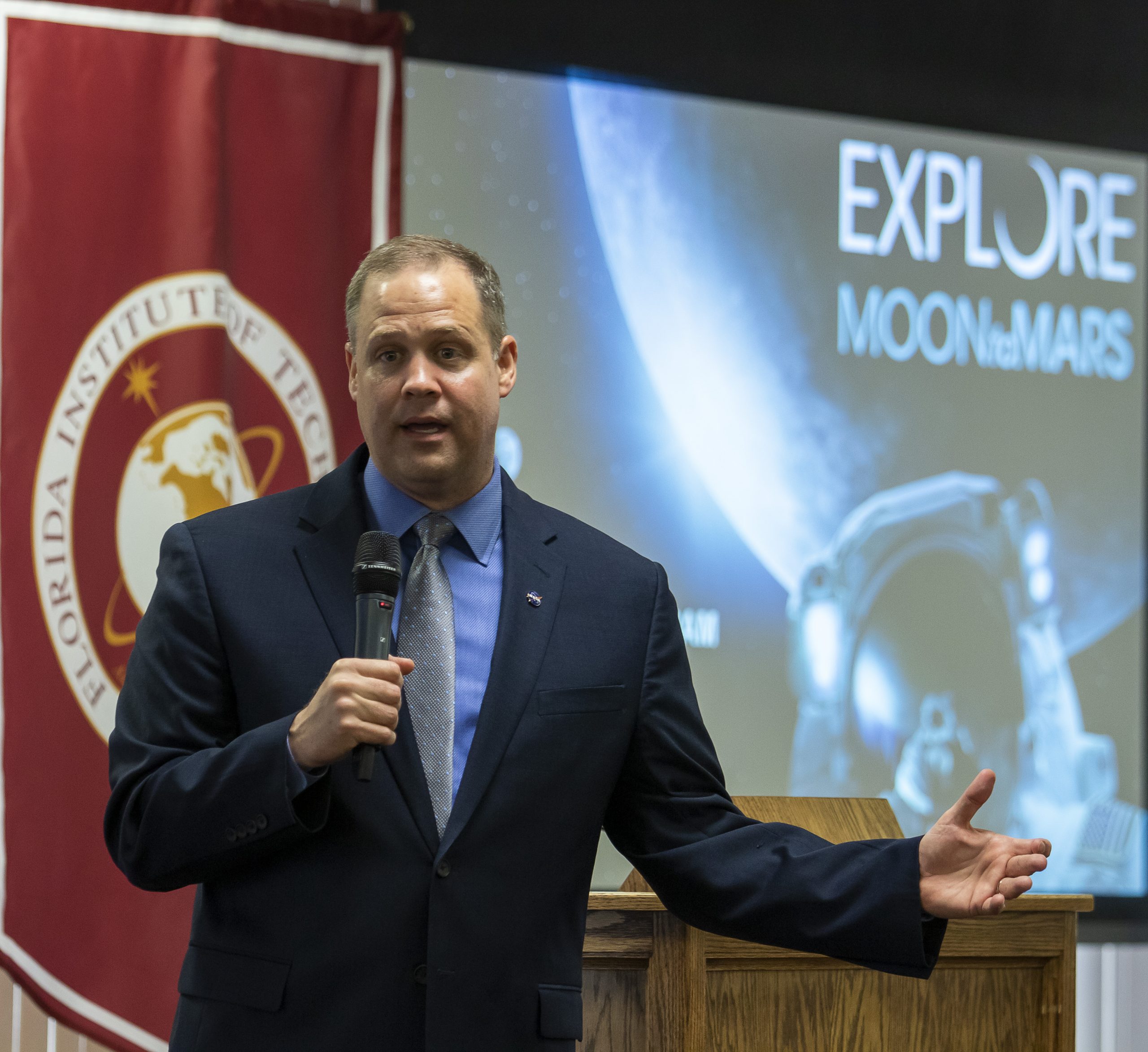Bridenstine Discusses Moon, Mars as Florida Tech Hosts Space Technology Day
Florida Tech welcomed NASA Administrator Jim Bridenstine to campus today as the university hosted Space Technology Day. The daylong event brought together professors, students, engineers, technologists and business leaders from around Florida to engage on NASA’s current and future space technology activities as the agency’s plans for humans to reach the moon in 2024 and Mars in 2033.
In an hour-long keynote address, Bridenstine presented the ways in which the agency will reach the moon through its recently-announced Artemis program, and disclosed for the first time that Maxar Technologies has been selected as the company that will power and propulsion part of the lunar Gateway, a key component of the Artemis program that will serve as an orbiting base for astronauts. The command and service module will be in orbit for 15 years. The move to go with commercial partners will diversify production, allowing NASA to focus on development specific to the government sector, Bridenstine said.
“We’re going to go with commercial partners, we’re going to go with international partners,” he said. “We are building a coalition of nations for a sustainable return to the moon.”
And, Bridenstine added, Florida Tech is a key partner.
“Florida Tech is an amazing university that provides a lot of talent to NASA and to contractors serving NASA,” he said.
Bridenstine also discussed the new policy of utilizing the resources of the moon, as researchers have confirmed the presence of water ice on the south pole of the astronomical body. In addition to being a place that could possibly support human life and be an origin of precious metals, the discovery could also serve as a fuel source, as hydrogen and oxygen are the same sources that powered space shuttle main engines and will power NASA’s SLS rocket that may carry astronauts to the moon.
The journey to the moon will also serve as a test for when NASA attempts to get humans to the red planet.
“The last piece of Space Policy Directive One, given by the President of the United States, is to take this technology, take the capability that we’re building, to reduce risk, to prove capability, prove technology, and then as much as possible replicate it at Mars,” Bridenstine said.
With this year being the 50th anniversary of the Apollo moon landing, the NASA Administrator noted the significance of the Artemis program, not only as the name of the twin sister of the Greek deity Apollo, but also as a showcase of the advancements in technology and personnel, as NASA plans to put the first woman on the moon with this trip as well.
“Back then, all of our astronauts came from the military, they were fighter pilots,” he said. “The bottom line is there were no opportunities for women, and now for the first time we are going to send a very diverse astronaut core to the surface of the moon to inspire the next generation.”
In addition to Bridenstine’s visit, NASA personnel made technical presentations that focused on advanced materials, robotics and autonomy, power and propulsion, and advanced manufacturing. After the presentations, discussions segments with Q&A sessions were held.
###





